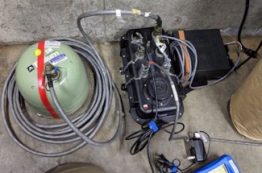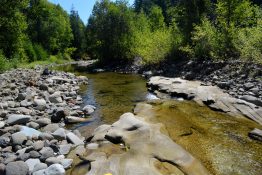Congratulations to Atmospheric Sciences‘ Professor Qiang Fu, who was recently awarded the Jule G. Charney Medal from the American Meteorological Society. This top honor is granted to individuals in recognition of highly significant research or development achievement in the atmospheric or hydrologic sciences. The citation will read, “For pioneering contributions to the theory and practice of atmospheric radiative transfer and its critical linkages to climate and climate change.”
Read more »Seismologists seek space on volunteers’ floors and lawns to study Seattle seismic risks
The Puget Sound area is vulnerable to several types of seismic risks. We might fixate on “The Really Big One” – the offshore hazard famously profiled in The New Yorker – but other dangers lurk closer underfoot, and might actually deliver more damage to Seattle. The nature of the ground beneath the city — a roughly 4-mile-deep basin filled with soil and soft rock — makes the urban core especially vulnerable to seismic shaking.
Read more at UW News »Historic logging site shows first human-caused bedrock erosion along an entire river
Geologic time is supposed to be slow, and the most solid object should be bedrock. But new University of Washington research upends both concepts: Effects of logging show that human activity can significantly erode bedrock, causing geology to fast forward. The study, published April 15 in the Proceedings of the National Academy of Sciences, focuses on the Teanaway River, a picturesque river in central Washington state.
Read more at UW News »North Dakota site shows wreckage from same object that killed the dinosaurs
In a paper published April 1 in the Proceedings of the National Academy of Sciences an international team of authors, including University of Washington Provost Mark Richards, share the discovery of a site that tells another piece of the story from the day a meteor strike is thought to have led to the end of the dinosaurs. “It’s like a museum of the end of the Cretaceous in a layer a meter and a half thick,” said Richards, who is also a professor in the UW Department of Earth & Space Sciences.
Read more »Bubble streams off Washington’s coast provide clues to what will happen during a major earthquake
Off the coast of Washington, columns of methane bubbles are being squeezed out of sediment and rising up through the water. A study by the University of Washington and Oregon State University suggests that the locations of these bubble plumes provide important clues to what will happen during a major offshore earthquake. Analysis of the underlying geology suggests that the bubbles emerge here because of the gas and fluid rising through faults which are generated by the motion of geologic plates—the same plates that produce major offshore earthquakes in the Pacific Northwest.
Read more at UW Today »





